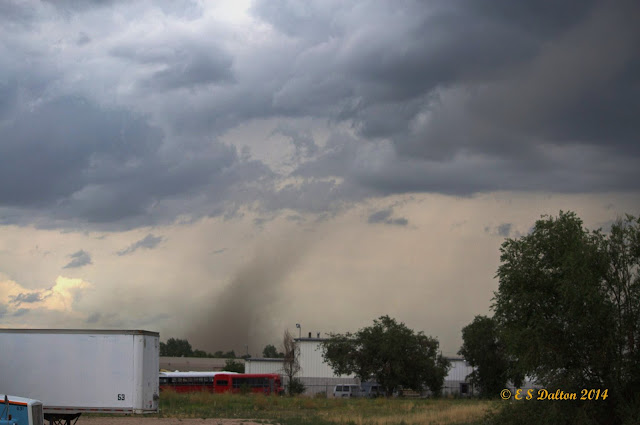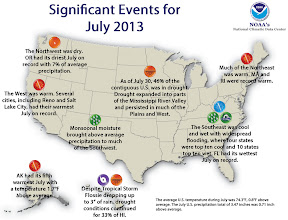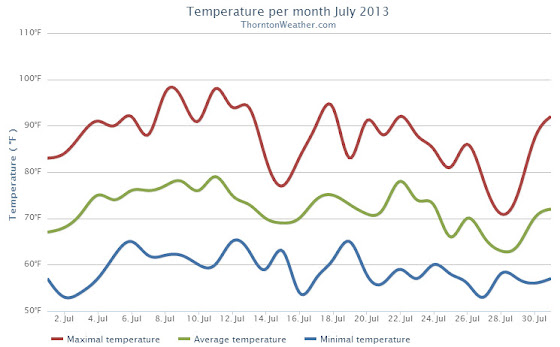
As always, an interesting week in Denver and Thornton weather history. Various severe weather items are noteworthy, none more so than on July 2, 2006 when a teenager wearing an iPod was struck with lightning. The music player actually contributed to the teen’s injuries by providing a direct route for the electricity into the victim’s head via the headphones.
From the National Weather Service:
21-3
In 2002…the maximum temperature in Denver equaled or exceeded 90 degrees for 13 consecutive days…equaling the 5th longest such streak on record. The record of 18 consecutive days was set during the summer of 1901.
28
In 1873…there was a great deal of smoke over the city from forest fires in the mountains.
In 1875…smoke from forest fires in the foothills south of Denver were visible from the city.
In 1913…an apparent dry microburst produced southwest winds sustained to 44 mph with gusts to 48 mph in the city.
In 1925…a thunderstorm produced north winds sustained to 38 mph with gusts to 44 mph.
In 1958…a microburst caused a brief wind gust to 58 mph at Stapleton Airport.
In 1964…lightning struck several homes in metro Denver… Sparking fires. Some flooding occurred in the stockyards area…at West 45th Avenue and St. Paul Street…and along Harvard Gulch.
In 1997…strong microburst winds of unknown speed downed several trees…signs…and at least one light pole in the Fort Lupton area. Two trees knocked over by the storm downed power lines causing scattered outages.
In 2002…a thunderstorm wind gust to 60 mph was recorded in Parker.
In 2005…severe thunderstorms produced wind gusts to 66 mph near Longmont and to 60 mph near Niwot. No damage was reported. A thunderstorm produced a wind gust to 55 mph at Denver International Airport during the afternoon.
29
In 1874…eight different fires in mountain forests were visible from the city. All of the fires were extensive… And the volume of smoke from each was immense. Three of these fires had been burning from the 18th with varied intensity.
In 1911…an apparent dry microburst produced sustained winds to 45 mph.
In 1960…a strong gust of wind blew a small foreign sedan off the highway near Brighton…injuring the driver. East winds gusted to 40 mph at Stapleton Airport.
In 1961…thunderstorm winds estimated as high as 40 to 50 mph occurred over southeast Denver. No significant damage was reported.
In 1962…heavy rain and small hail caused some flooding in southwest Denver.
In 1995…upslope cloudiness with rain and fog cooled temperatures to record levels. Low temperature of 47 degrees equaled the record for the date. High temperature of only 54 degrees set a new record low maximum for the date. Rainfall totaled 0.90 inch at Denver International Airport and 0.41 inch at the site of the former Stapleton International Airport.
In 2003…a severe thunderstorm in Parker produced hail to 1 inch in diameter.
In 2011…two airmen from the Colorado National Guard suffered minor injuries when they were struck by lightning. They were hit while on duty at a flight line at Buckley Air Force Base. At Denver International Airport…a microburst produced a peak wind gust to 72 mph.
29-2
In 1990…almost a year to date after the record breaking heat in early July 1989…the third longest heat wave in Denver history started. From June 29th through July 2nd the temperature reached 100 degrees or more on four consecutive days. The highest reading of 102 degrees occurred on the 29th…30th…and 1st. Combined with the 102 degree reading on June 27th this would have been the longest heat wave on record…but the temperature climbed to only 98 degrees on June 28th.
29-15
In 2000…the 29th marked the beginning of a near record hot streak for metro Denver. The high temperatures…as recorded at Denver International Airport…exceeded the 90 degree mark for 17 consecutive days from June 29th through July 15th. This was one day short of equaling the all time record. The record of 18 consecutive 90 degree or above days was first set from July 1st through July 18th…1874. The record was equaled from July 6th through July 23rd…1901.
30
In 1879…dense smoke from mountain forest fires covered the city and obscured the sun as it set behind the mountains.
In 1900…a thunderstorm produced northwest winds to 44 mph with gusts to 58 mph…but only a trace of rain.
In 1917…north winds were sustained to 47 mph with gusts to 52 mph.
In 1942…a strong thunderstorm produced hail and heavy rainfall in south Denver. Leaves were stripped from trees and heavy rain caused street flooding which halted traffic. Hail of unknown size reached a depth of 9 inches on the ground.
In 1965…funnel clouds were observed to the south of Stapleton International Airport and in Jefferson County…15 miles southwest of the airport. Later…a tornado touched down briefly 1 mile east of Littleton…causing only minor damage. Another tornado was observed 12 miles southwest of Stapleton International Airport in Jefferson County. Hail to 3/4 inch in diameter fell in the bear valley area…12 miles south- southwest of Stapleton International Airport. Yet another tornado was sighted 10 miles northwest of the airport. Cloudbursts accompanied by hail battered areas of Arapahoe and Adams counties east of Denver…damaging ripening grain fields. At Lafayette…3.50 inches of rain fell in 30 minutes…causing some flooding.
In 1982…numerous funnel clouds were observed over southwest metro Denver. Only one funnel touched down near the intersection of Jewell and Kipling. The tornado was on the ground for about 5 minutes and caused no damage except for uprooting some trees. In addition…thunderstorms produced heavy rain and hail in the foothills west of Denver. Over an inch of rain fell in a short time near Idaho Springs… Causing clear creek to overflow its banks and flood a few low lying areas of the town. A few people were evacuated… And water and mud entered several stores. The heavy rain also washed out several roads. Hail piled up to a depth of 3 to 4 inches near Idaho Springs. Hail to 3/4 inch was reported at many places across metro Denver including Stapleton International Airport. Lightning struck a chemistry building on the university of Colorado campus in Boulder and started a small fire. Thunderstorm wind gusts to 60 mph were reported near Brighton.
In 1984…heavy rain caused some street and basement flooding in Littleton. One location received 1.56 inches of rain in 75 minutes.
In 1987…a weak tornado near Watkins stayed on the ground for 5 minutes.
In 1990…a small twister touched down in an open field just north of the rocky mountain arsenal. No damage was reported.
In 1998…hail as large as 1 inch in diameter fell near Evergreen.
In 2005…a severe thunderstorm produced hail as large as 3/4 inch near Roggen. The hail destroyed a wheat field.
In 2006…the temperature reached a high of 98 degrees at Denver International Airport. This marked the 19th day in June with a maximum temperature of 90 degrees or more setting a new all-time record for the month.
In 2011…very strong thunderstorm winds were also observed across portions of the urban corridor. A peak wind gust to 65 mph was recorded…2 miles northeast of boulder with a gust to 63 mph at Front Range Airport at Watkins and 7 miles southeast of Denver International Airport. The peak wind gust measured at Denver International Airport itself was 45 mph. A severe thunderstorm also produced one inch in diameter hail 2 miles south-southeast of Parker. In addition…a lightning strike destroyed a home in north Denver.
Continue reading June 28 to July 4: This week in Denver weather history






